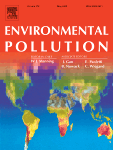Microplastics in bivalves cultured for human consumption
Microplastics in bivalves cultured for human consumption
 Today, 27 years after Cpt. Charles J. Moore first discovered the Great Pacific Garbage Patch, marine plastic pollution continues to be a growing threat to the marine environment. As plastic debris is ubiquitious across the world's seas and oceans, the consequences of macroplastics for most (vertebrate) wildlife have been identified over the years. Yet, to date, the impacts of microplastics are less understood. These plastic particles (< 1mm), which are found in cosmetics and can be formed through the degradation of larger plastic items, are becoming increasingly abundant. As our research has shown, they can now be found from the surface layer all the way down to the deep-sea sediment. Worringly, microplastics can be ingested by a wide range of marine organisms because of their small dimensions which in turn creates an understudied risk of exposure for human consumers. Here we present the first study to report on the possible consequences of marine microplastics for human consumers by analysing the occurence of microplastics in commercially available shellfish. From our results, we calculated that the average European shellfish consumer has an uptake of 6400 microplastics per year. As there is a lack of (mammal) effect studies, this exposure poses an unknown risk for human health.
Today, 27 years after Cpt. Charles J. Moore first discovered the Great Pacific Garbage Patch, marine plastic pollution continues to be a growing threat to the marine environment. As plastic debris is ubiquitious across the world's seas and oceans, the consequences of macroplastics for most (vertebrate) wildlife have been identified over the years. Yet, to date, the impacts of microplastics are less understood. These plastic particles (< 1mm), which are found in cosmetics and can be formed through the degradation of larger plastic items, are becoming increasingly abundant. As our research has shown, they can now be found from the surface layer all the way down to the deep-sea sediment. Worringly, microplastics can be ingested by a wide range of marine organisms because of their small dimensions which in turn creates an understudied risk of exposure for human consumers. Here we present the first study to report on the possible consequences of marine microplastics for human consumers by analysing the occurence of microplastics in commercially available shellfish. From our results, we calculated that the average European shellfish consumer has an uptake of 6400 microplastics per year. As there is a lack of (mammal) effect studies, this exposure poses an unknown risk for human health.
Scientific abstract
Microplastics are present throughout the marine environment and ingestion of these plastic particles (<1 mm) has been demonstrated in a laboratory setting for a wide array of marine organisms. Here, we investigate the presence of microplastics in two species of commercially grown bivalves: Mytilus edulis and Crassostrea gigas. Microplastics were recovered from the soft tissues of both species. At time of human consumption, M. edulis contains on average 0.36 ± 0.07 particles g−1 (wet weight), while a plastic load of 0.47 ± 0.16 particles g−1 ww was detected in C. gigas. As a result, the annual dietary exposure for European shellfish consumers can amount to 11,000 microplastics per year. The presence of marine microplastics in seafood could pose a threat to food safety, however, due to the complexity of estimating microplastic toxicity, estimations of the potential risks for human health posed by microplastics in food stuffs is not (yet) possible.
Full reference
Van Cauwenberghe L, Janssen C, 2014. Microplastics in bivalves cultured for human consumption. Environmental Pollution, 193, 65-70. DOI: 10.1016/j.envpol.2014.06.010
